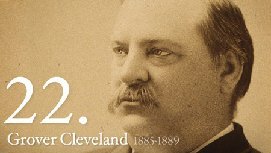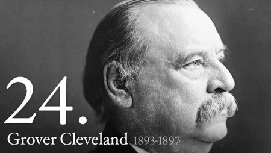Idaho (/ˈaɪdəhoʊ/ ⓘ EYE-də-hoh) is a state in the Mountain West subregion of the United States. It shares a small portion of the Canada–United States border to the north, with the province of British Columbia. It borders Montana and Wyoming to the east, Nevada and Utah to the south, and Washington and Oregon to the west. The state's capital and largest city is Boise. With an area of 83,570 square miles, Idaho is the 14th largest state by land area. With a population of approximately 1.8 million, it ranks as the 13th least populous and the 6th least densely populated of the 50 U.S. states.
For thousands of years, and prior to European colonization, Idaho has been inhabited by native peoples. In the early 19th century, Idaho was considered part of the Oregon Country, an area of dispute between the U.S. and the British Empire. It officially became a U.S. territory with the signing of the Oregon Treaty of 1846, but a separate Idaho Territory was not organized until 1863, instead being included for periods in Oregon Territory and Washington Territory. Idaho was eventually admitted to the Union on July 3, 1890, becoming the 43rd state.
Forming part of the Pacific Northwest (and the associated Cascadia bioregion), Idaho is divided into several distinct geographic and climatic regions. The state's north, the relatively isolated Idaho Panhandle, is closely linked with Eastern Washington, with which it shares the Pacific Time Zone—the rest of the state uses the Mountain Time Zone. The state's south includes the Snake River Plain (which has most of the population and agricultural land), and the southeast incorporates part of the Great Basin. Idaho is quite mountainous and contains several stretches of the Rocky Mountains. The United States Forest Service holds about 38% of Idaho's land, the highest proportion of any state.
Industries significant for the state economy include manufacturing, agriculture, mining, forestry, and tourism. Several science and technology firms are either headquartered in Idaho or have factories there, and the state also contains the Idaho National Laboratory, which is the country's largest Department of Energy facility. Idaho's agricultural sector supplies many products, but the state is best known for its potato crop, which comprises around one-third of the nationwide yield. The official state nickname is the "Gem State."
The name's origin remains a mystery. In the early 1860s, when the U.S. Congress was considering organizing a new territory in the Rocky Mountains, the name "Idaho" was suggested by George M. Willing, a politician posing as an unrecognized delegate from the unofficial Jefferson Territory. Willing claimed that the name was derived from a Shoshone term meaning "the sun comes from the mountains" or "gem of the mountains", but it was revealed later that there was no such term and Willing claimed that he had been inspired to coin the name when he met a little girl named Ida. Since the name appeared to be fabricated, the U.S. Congress ultimately decided to name the area Colorado Territory instead when it was created in February 1861, but by the time this decision was made, the town of Idaho Springs, Colorado had already been named after Willing's proposal.
Humans may have been present in the Idaho area as long as 14,500 years ago. Excavations at Wilson Butte Cave near Twin Falls in 1959 revealed evidence of human activity, including arrowheads, that rank among the oldest dated artifacts in North America. American Indian peoples predominant in the area included the Nez Percé in the north and the Northern and Western Shoshone in the south.
Idaho's climate varies widely. Although the state's western border is about 330 miles from the Pacific Ocean, the maritime influence is still felt in Idaho; especially, in the winter when cloud cover, humidity, and precipitation are at their maximum extent. This influence has a moderating effect in the winter where temperatures are not as low as would otherwise be expected for a northern state with predominantly high elevations. In the panhandle, moist air masses from the coast are released as precipitation over the North Central Rockies forests, creating the North American inland temperate rain forest. The maritime influence is least prominent in the state's eastern part where the precipitation patterns are often reversed, with wetter summers and drier winters, and seasonal temperature differences are more extreme, showing a more semi-arid continental climate.
Population
The United States Census Bureau determined Idaho's population was 1,900,923 on July 1, 2021, a 21% increase since the 2010 U.S. census.
Idaho had an estimated population of 1,754,208 in 2018, which was an increase of 37,265, from the prior year and an increase of 186,626, or 11.91%, since 2010. This included a natural increase since the last census of 58,884 (111,131 births minus 52,247 deaths) and an increase due to net migration of 75,795 people into the state. There are large numbers of Americans of English and German ancestry in Idaho. Immigration from outside the United States resulted in a net increase of 14,522 people, and migration within the country produced a net increase of 61,273 people
If you want to read a whole lot more, go here: https://en.wikipedia.org/wiki/Idaho
- SERVES
- 4
- COOK TIME
- 20 Min
There's a reason why we call this dish Five Star Chicken -- because it tastes like something you would order from a fancy restaurant. The good news here is that you don't have to spend Michelin Star prices to eat like the rich and famous! This easy chicken dish is super affordable, and can be made in the comfort of your own kitchen. Get ready for restaurant quality food at your kitchen table!
- 1/4 cup all-purpose flour
- 1/2 teaspoon salt
- 1/2 teaspoon black pepper
- 4 boneless, skinless chicken breast halves (1 to 1-1/2 pounds total)
- 1/4 cup (1/2 stick) butter
- 1/2 cup chicken broth
- 1/4 cup dry white wine
- 1/2 pound mushrooms, quartered
- 1 large tomato, chopped
- 1 small onion, chopped
- 2 tablespoons chopped fresh parsley
- In a shallow dish, combine flour, salt, and pepper; coat chicken evenly on both sides.
- In a large skillet over medium-high heat, melt butter; saute chicken 4 to 5 minutes per side, or until browned. Remove to a platter and set aside.
- Add remaining ingredients except parsley to skillet and cook 5 to 7 minutes, stirring occasionally. Return chicken to skillet and reduce heat to medium-low.
- Simmer 5 to 7 minutes, or until sauce thickens and chicken is warmed through. Sprinkle with parsley and serve.
1926 – Peter Graves, American actor (d. 2010)

















No comments:
Post a Comment